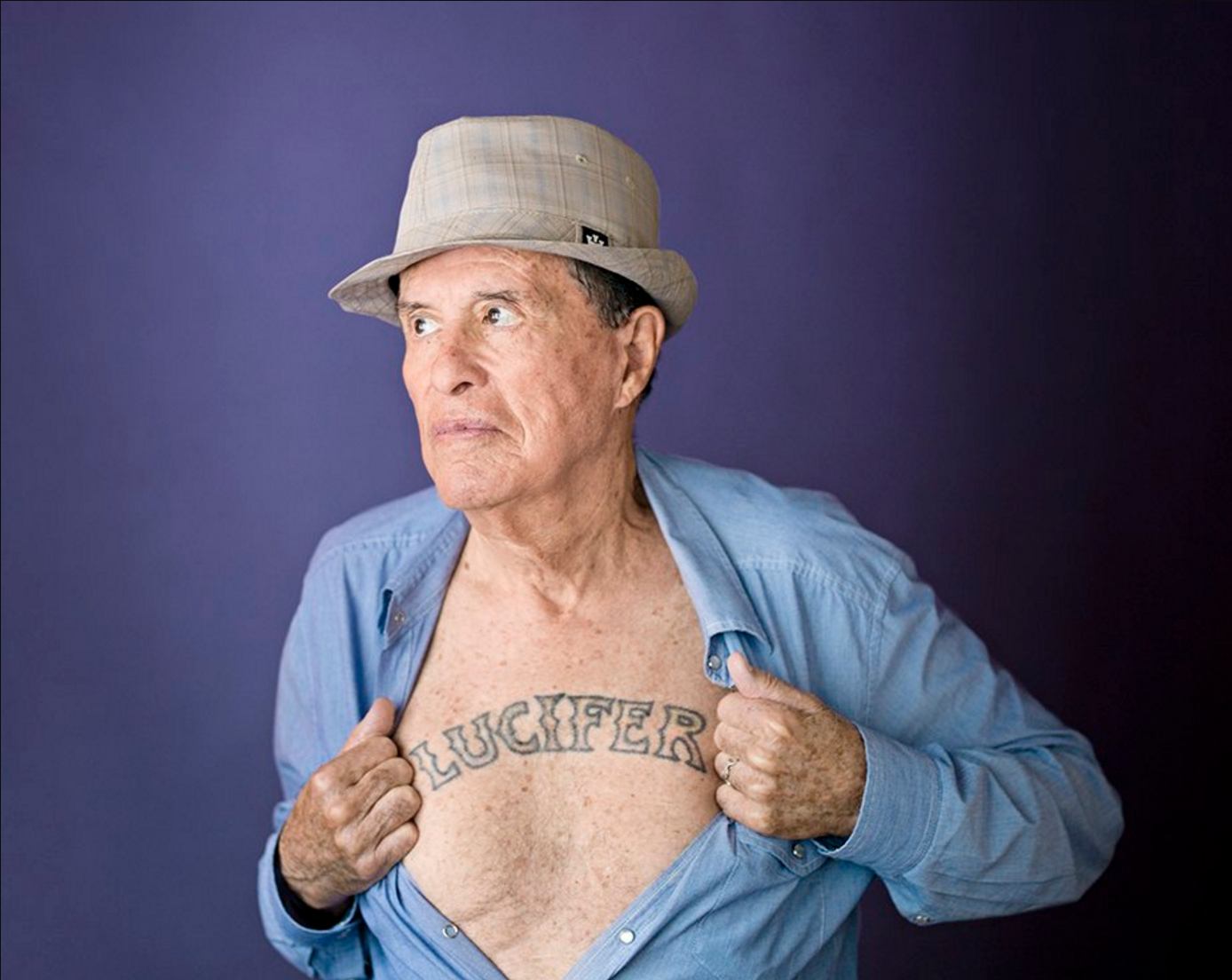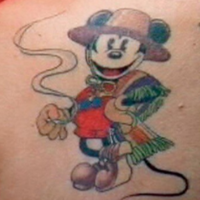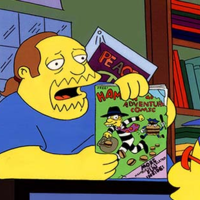More about Kenneth Anger
Works by Kenneth Anger

Contributor
My top-three fantasy dinner party guests are probably Ruth Bader Ginsburg, a young Tom Waits, and Kenneth Anger.
As a major influence on David Lynch, John Waters, and Martin Scorsese, you’d definitely expect Anger to be some kind of godfather of Hollywood weirdness. But, my friend, you have no idea. Née Kenneth Anglemeyer in 1927, he’s a native Angeleno who’s watched LA shift from Old Hollywood glamour/smut to... the Kardashians. He’s a keeper (or spiller) of show biz secrets and gossip. On my reading list is "Hollywood Babylon," his juicy film industry tell-all.
So, in order to understand where Anger is coming from you kind of have to know about his lifelong dedication to the occult and that he’s been a disciple of the English mystic Aleister Crowley (the founder of Thelema, a ritualistic and witchy spiritual practice) since 1955. Crowley really deserves his own article--just know that he pronounced himself the messenger of “Aiwass,” the divine voice at the center of Thelema, and went by the moniker “The Beast.”
Anger is a filmmaker. His highly erotic work is inspired by the occult and Old Hollywood, talks about death, sex and magic, and evokes dreams, the subconscious, acid trips, etc. His films are silent and generally stray from traditional narrative, relying on music and powerful visuals to keep it weird and sexy. Anger refers to them as “cinepoems”--a type of visual poetry.
He was charged with obscenity in California for the 1947 short film "Fireworks," which depicts a man (himself) sustaining an extremely homoerotic attack from a group of sailors. Perhaps a little tame by today’s standards, but in McCarthy’s America, the closeups of man nipples were not cool. Anger shot the film at his parents’ place while they were away at a funeral. He said the film was “all I have to say about being seventeen, the United States Navy, American Christmas, and the Fourth of July.” All bases covered.
Aside from the haters, some people loved “Fireworks,” including notable sexologist Alfred Kinsey. He purchased several copies of the film for use at the Institute of Sex Research. Kinsey and Anger became close friends. They traveled together in Europe, and Anger ushered Kinsey into LA’s underground gay scene. Oh, also, Anger masturbated on camera in Kinsey’s attic for a research study on sexuality.
Other fun facts:
- Anger claims three different UFO sightings--one in San Francisco, two in England.
- His tattoos include the seal of Aleister Crowley on his forearm, and “LUCIFER” across his chest.
- Vincent Gallo, a friend of Anger’s, thoughtfully purchased a plot for him in the Hollywood Forever Cemetery, next to Johnny Ramone.
Sources
- Clay Smith, “Kustom Film Kommand: Interview with Filmmaker Kenneth Anger,” The Austin Chronicle, October 31 1997, accessed March 29 2017, http://www.austinchronicle.com/screens/1997-10-31/518703/print/
- Edward Helmore, “Kenneth Anger: ‘The occult never quite goes away,’” The Guardian, January 29 2016, accessed March 29 2017, https://www.theguardian.com/artanddesign/2016/jan/29/kenneth-anger-film…
- Harmony Korine, “Kenneth Anger,” Interview Magazine, June 30 2014, accessed March 29 2017, http://www.interviewmagazine.com/film/kenneth-anger#_
- Mick Brown, “Kenneth Anger: Where the Bodies Are Buried,” Esquire, January 30 2014, accessed March 29 2017, http://www.esquire.co.uk/culture/news/a5483/kenneth-anger/
- Simone Hattenstone, “Kenneth Anger: ‘No, I am not a Satanist,’” The Guardian, March 10 2010, accessed March 29 2017, https://www.theguardian.com/film/2010/mar/10/kenneth-anger-interview
Featured Content
Here is what Wikipedia says about Kenneth Anger
| Part of a series on |
| Thelema |
|---|
 |
Kenneth Anger (born Kenneth Wilbur Anglemyer, February 3, 1927 – May 11, 2023) was an American underground experimental filmmaker, actor, and writer. Working exclusively in short films, he produced almost 40 works beginning in 1937, nine of which have been grouped together as the "Magick Lantern Cycle". Anger's films variously merge surrealism with homoeroticism and the occult, and have been described as containing "elements of erotica, documentary, psychodrama, and spectacle". He has been called "one of America's first openly gay filmmakers", with several films released before homosexuality was legalized in the U.S. Anger also explored occult themes in many of his films; he was fascinated by the English occultist Aleister Crowley and an adherent of Thelema, the religion Crowley founded.
Born in a middle-class Presbyterian family in Santa Monica, California. He began making short films when he was 14 years old, although his first film to gain any recognition was the homoerotic Fireworks (1947). The work's controversial nature led to his trial on obscenity charges, but he was acquitted. A friendship and working relationship subsequently began with pioneering sexologist Alfred Kinsey. Moving to Europe, Anger produced a number of shorts inspired by the avant-garde scene there, such as Eaux d'Artifice (1953) and Rabbit's Moon (1971).
Returning to the U.S. in the early 1950s, Anger began work on several new projects, including the films Inauguration of the Pleasure Dome (1954), Scorpio Rising (1964), Kustom Kar Kommandos (1965), and the gossip book Hollywood Babylon (1965). The latter became infamous for various dubious and sensationalist claims, many of which were disproved, though some remain urban legends. Getting to know several notable countercultural figures of the time, Anger involved them in his subsequent Thelema-themed works, Invocation of My Demon Brother (1969) and Lucifer Rising (1972). After failing to produce a sequel to Lucifer Rising, which he attempted through the mid-1980s, Anger retired from filmmaking, instead focusing on Hollywood Babylon II (1984). In the 2000s he returned to filmmaking, producing shorts for various film festivals and events.
Anger described filmmakers such as Auguste and Louis Lumière, Georges Méliès, and Maya Deren as influences, and has been cited as an important influence on directors like Martin Scorsese, David Lynch, and John Waters. Kinsey Today argued that Anger had "a profound impact on the work of many other filmmakers and artists, as well as on music video as an emergent art form using dream sequence, dance, fantasy, and narrative."
Check out the full Wikipedia article about Kenneth Anger












